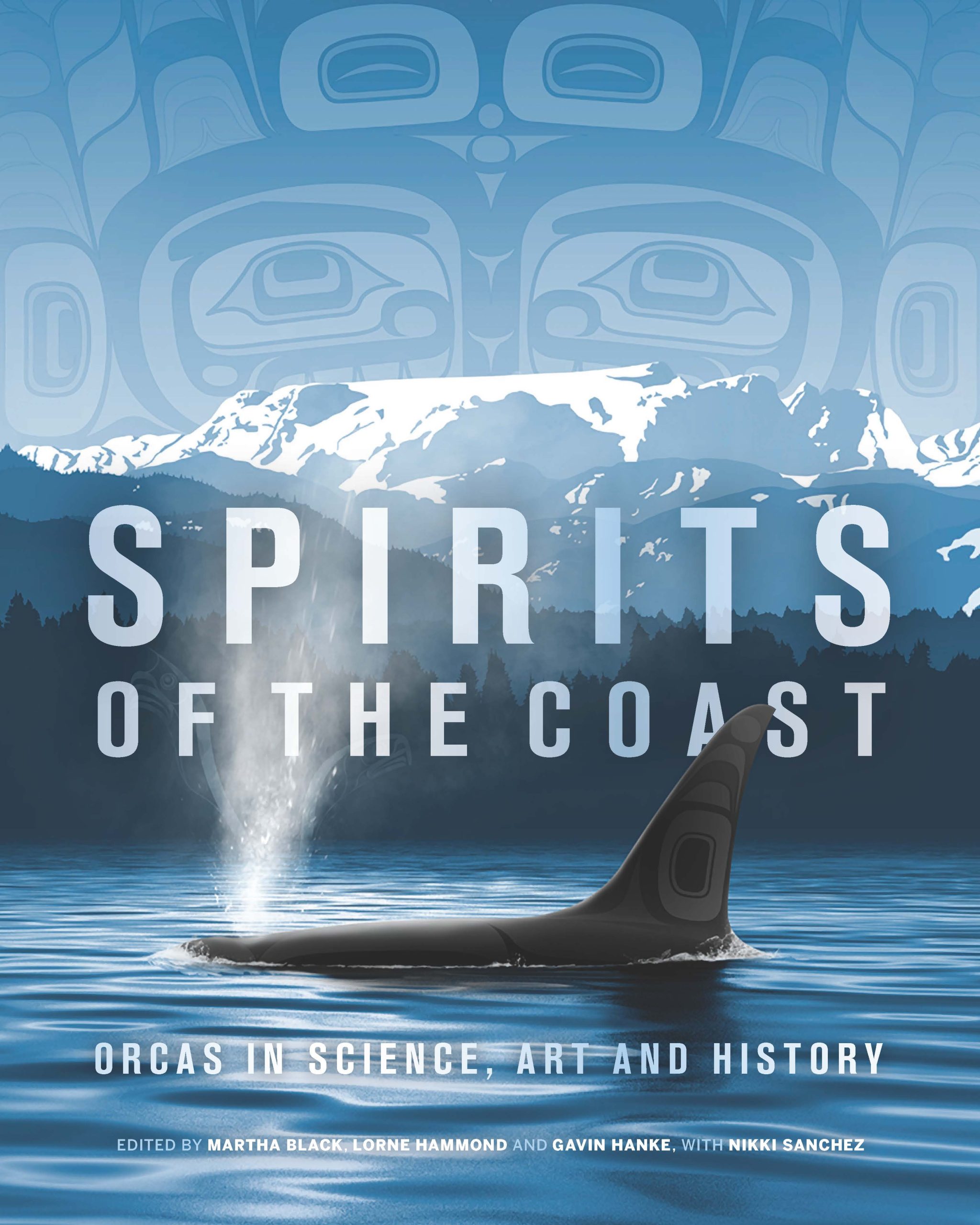
Spirits of the Coast: Orcas in Science, Art and History
Review By Meghan Walley
September 25, 2020
BC Studies no. 208 Winter 2020/21 | p. 143-144
As I write, the world has received news that Talequah (or J35), the Southern Resident killer whale who carried her dead newborn for two weeks in 2018, is pregnant again. Spirits of the Coast: Orcas in Science, Art and History captures the juxtaposition of hope against tragedy embodied by Talequah’s story and the stories of the Southern Resident killer whales of the Salish Sea. It is a multidisciplinary coffee table-style book comprising twenty-one short essays, stories, and poems. It follows from an environmentalist discourse that took off in the 1970s but endeavors to go further in presenting multiple lenses through which the reader can view and connect with killer whales.
In terms of writing, the greatest strength of Spirits of the Coast is its multivocality. By providing a variety of cultural, scientific, and experiential lenses, it brings orcas into a three-dimensional view that evokes both reverence and empathy. Beyond the writing, the book is aesthetically beautiful. The cover, designed by Andy Everson, situates the subject in both ecological and cultural contexts through the superimposition of Kwakwaka’wakw motifs against the image of a breaching whale. Inside, there are no wasted opportunities for visual communication. The aesthetics of this book encourage everyone, including those who cannot read the language printed on the pages, to engage more deeply. As Nickki Sanchez puts it in her Introduction, the artwork included is “not art for adornment, but art as stories” (3). This comes across beautifully.
The book comprises three sections: Connection, Captivity, and Consciousness. While this structure provides framing, I found myself wanting a more coherent flow and a greater sense of interweaving between contributions. This is especially apparent in the “Captivity” section, where editing for redundancy may have enhanced the book’s message.
In her Introduction, Sanchez notes that the book presents human perspectives, and that the orcas’ side remains to be told. At times contributions focus, with varying levels of self-awareness, on the human-like aspects of orcas. While drawing connections between humans and non-humans can garner empathy and mobilize people, this approach may fail to recognize the value of non-human qualities while removing emphasis from ecological context. Fittingly, the strongest contributions are those that do present context, such as Misty MacDuffee’s essay “A Bond Through Salmon, Language and Grandmothers” (17), and those that centre humility in human relationships with non-human beings, such as “The Peace Treaty” (33) by Rande Cook with Charlie Matilpi.
In some areas, the book may have benefitted from more rigorous fact-checking. For example, a mention of the International Whaling Commission’s moratorium on commercial whaling following an assertion that Canada has stopped whaling (140) is misleading because Canada has not signed on to the moratorium, the moratorium does not apply to killer whales, and whales are still an important resource for many northern Indigenous communities. In general, deeper explorations of the politics of conservation, including focus on environmental policy, conflicting human interests, and ways forward, would enhance this volume.
Despite these few areas that may have been further developed, Spirits of the Coast is a beautifully rendered composition of diverse perspectives on killer whales appropriate for popular audiences. As is eloquently expressed in Jess Housty’s “Kinship” (175), the way forward in addressing the wellbeing of the Southern Resident killer whales is through deepened connection. This volume presents a jumping off point for those of us who want to build towards a future where we are in community with the beings with whom we share our waters.
Publication Information
Black, Martha, Lorne Hammond, and Gavin Hanke, with Nikki Sanchez, eds. Spirits of the Coast: Orcas in Science, Art and History. Victoria, BC: Royal BC Museum, 2020. 216 pp. $29.95 paper.
